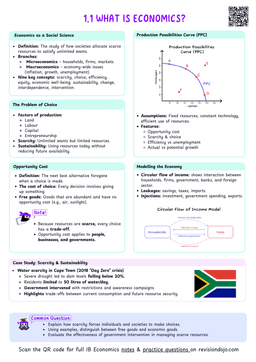Price is not the only factor that affects the demand of an individual consumer or the market. These other factors are referenced to as the non-price determinants of demand.
Non-Price Determinants of Demand
Factors, other than price, that can affect the demand of consumers and shift the demand curve.
The most important thing to note in this topic is that:
- Changes in price changes the quantity of a good or service demanded (causing a movement along the demand curve).
- Changes in the non-price determinants of demand change the quantity of a good or service demanded in the market at all possible price points (causing a shift of the demand curve).
- A rightwards shift means that for all given prices, there is more quantity demanded.
- A leftwards shift means that for all given prices, there is less quantity demanded.

The non-price determinants of demand covered in the IB curriculum:
- Income.
- Tastes and preferences.
- Future price expectations.
- Price of related goods:
- Substitutes.
- Complements.
- Number of consumers.
Changes in consumer income
Changes in consumer income for normal goods
Normal goods
A good whose demand increases as consumer income increases.
Normal goods are goods that you would buy more of if you had more money, such as:
- TVs
- Clothes
- Restaurant meals.
Increased consumer income → rightwards shift
- When consumer income increases, the consumer purchasing power increases (goods and services are now relatively cheaper).
- This increase in purchasing power increases the quantity of a normal good that consumers are able to buy at all given prices.
- Therefore, there is a higher demand for the normal good at all possible prices (before not so many could afford it).
- This shifts the demand curve to the right.
Decreased consumer income → leftwards shift
- When consumer income increases, the consumer purchasing power decreases (goods and services are now relatively more expensive).
- This decrease in purchasing power decreases the quantity of a normal good that consumers are able to buy at all given prices.
- Therefore, there is a lower demand for the normal good at all possible prices (before more could afford it).
- This shifts the demand curve to the left.
Changes in consumer income for inferior goods
Inferior goods
A good whose demand decreases as consumer income increases.
Inferior goods are goods that you would buy less of if you had more money, such as:
- Ramen packs.
- Second hand clothes.
- Bus tickets.
Increased consumer income → leftwards shift
- When consumer income increases, the consumer purchasing power increases (goods and services are now relatively cheaper).
- This increase in purchasing power decreases the quantity of an inferior good that consumers are willing to buy at all given prices (since they now can afford better normal goods).
- Therefore, there is a lower demand for the inferior good at all possible prices (less consumers want to buy it).
- This shifts the demand curve to the left.
Decreased consumer income → rightwards shift
- When consumer income decreases, the consumer purchasing power decreases (goods and services are now relatively more expensive).
- This increase in purchasing power increases the quantity of an inferior good that consumers are willing to buy at all given prices (since they now cannot afford better normal goods).
- Therefore, there is a greater demand for the inferior good at all possible prices (more consumers want to buy it).
- This shifts the demand curve to the right.
Tastes and preferences
Preferences and tastes refer to consumer choices influenced by trends, popularity, or other external factors.
Favourable changes in tastes and preferences → rightwards shift
- When consumer preferences shift in favour of a good, the product becomes more desirable or popular (.
- This increase in preference also increases the demand for the good at all given prices.
- As a result, the demand curve shifts to the right.
Unfavourable changes in tastes and preferences → rightwards shift
- If consumer preferences shift against a good, making it less popular or desirable, the demand for the good decreases.


